
Annual Review of Vision Science
Scope & Guideline
Transforming Research into Visionary Applications
Introduction
Aims and Scopes
- Neurobiology of Vision:
Explores the neural mechanisms underlying visual perception, including studies of retinal structure, function, and the processing of visual information in the brain. - Clinical and Translational Research:
Investigates clinical implications of vision science, including the development of treatments for visual disorders and the application of research findings to improve patient care. - Visual Cognition and Perception:
Focuses on how visual information is processed and interpreted by the brain, including studies on perception, attention, and the cognitive aspects of visual tasks. - Technological Advances in Vision Science:
Covers innovations in imaging technology, computational methods, and their applications in understanding vision and diagnosing eye diseases. - Developmental and Aging Processes in Vision:
Examines how visual systems develop from infancy through old age, including the impact of aging on visual function and diseases. - Impact of Environmental and Genetic Factors:
Studies the influence of genetic predispositions and environmental conditions on visual health and disease, addressing both hereditary and lifestyle factors.
Trending and Emerging
- Digital Health and Technology Integration:
Recent publications have shown a significant increase in studies focusing on digital twins, adaptive optics, and computational photography, indicating a trend towards integrating technology with vision science. - Neurodegenerative and Developmental Disorders:
A growing emphasis on the impact of genetic and environmental factors on visual disorders, such as myopia and retinopathy, reflects an emerging interest in personalized medicine approaches. - Innovations in Clinical Trials:
The focus on optimizing clinical trial design for vision-related therapies suggests a trend towards improving methodology in research aimed at treating visual impairments. - Retinal Connectomics and Synapse Development:
There is an increasing interest in the detailed study of retinal connectomics and synaptic mechanisms, highlighting the complexity of visual processing at the cellular level. - Visual Cognition and Decision-Making:
Emerging themes related to visual perception in decision-making processes indicate a trend towards understanding the cognitive aspects of visual input and its implications for behavior.
Declining or Waning
- Traditional Theoretical Models of Vision:
There appears to be a waning interest in purely theoretical models of visual perception that do not incorporate empirical data or technological advancements. - Basic Visual Processing Studies:
Research focusing solely on basic visual processing without considering clinical or translational implications is becoming less prevalent, as the journal trends towards more applied research. - Historical Perspectives on Vision Science:
Fewer articles are dedicated to historical reviews of vision science, indicating a shift towards contemporary and future-focused research. - Generalized Studies of Vision Disorders:
Specific studies on generalized vision disorders without a targeted approach or innovative treatment strategies are appearing less frequently. - Basic Retinal Anatomy Reviews:
While still important, comprehensive reviews of basic retinal anatomy are less common as the field increasingly emphasizes functional and clinical aspects.
Similar Journals
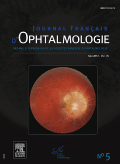
JOURNAL FRANCAIS D OPHTALMOLOGIE
Elevating clinical practices with cutting-edge findings.JOURNAL FRANCAIS D OPHTALMOLOGIE, published by MASSON EDITEUR, is a prominent peer-reviewed journal that serves as a vital resource in the field of ophthalmology. Launched in 1978, this esteemed publication continues to make significant contributions to the advancement of ocular health and vision science, with its scope encompassing clinical practices, innovative research, and the latest technological advancements in ophthalmic care. Based in France, the journal is recognized in the 2023 category quartiles with a Q3 ranking in ophthalmology, reflecting its dedication to quality scholarship within a competitive landscape, as evidenced by its positioning in the 30th percentile of the Scopus rankings. While it operates without Open Access, the journal remains crucial for professionals, researchers, and students alike, providing a platform for sharing knowledge and fostering collaborations in the global ophthalmological community.

Journal of Ophthalmic & Vision Research
Exploring Innovations in Eye HealthThe Journal of Ophthalmic & Vision Research, published by KNOWLEDGE E, stands as a crucial platform for disseminating high-quality research in the field of ophthalmology. With an ISSN of 2008-2010 and an E-ISSN of 2008-322X, this journal fosters open access to valuable insights since 2010, enhancing visibility and reach for researchers globally. Based in Dubai, UAE, it has established a reputation for excellence, reflected in its Q2 ranking in Ophthalmology for 2023 and its position among the top 65th percentile in Scopus. Covering a broad spectrum of topics within ophthalmic science, the journal serves as a vital resource for professionals, researchers, and students by presenting original research, reviews, and case studies that drive innovation and collaboration within the community. As the journal continues to contribute to advancements in eye care and vision sciences, it invites scholars to explore, engage, and publish within its pages, thus enriching the global discourse on ophthalmic health.
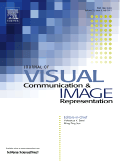
JOURNAL OF VISUAL COMMUNICATION AND IMAGE REPRESENTATION
Illuminating the Future of Image ProcessingJOURNAL OF VISUAL COMMUNICATION AND IMAGE REPRESENTATION, published by Academic Press Inc Elsevier Science, is an influential platform dedicated to the realms of visual communication, media technology, and advanced image representation. With a strong focus on interdisciplinary approaches, this journal aims to foster the exchange of innovative ideas among researchers and professionals in the fields of computer vision, image processing, and signal processing. Recognized for its significance, it boasts an impressive impact factor within its category quartiles; notably, it ranks Q2 in Computer Vision and Pattern Recognition and Electrical and Electronic Engineering, while achieving Q1 in Media Technology. Based in the United States, the journal not only provides valuable insights into the latest developments from 1990 to 2024 but also encourages cutting-edge research that enhances multimedia systems and user interactions. As a vital resource for students, researchers, and industry professionals alike, the journal ensures a robust understanding of visual information processing, critical for navigating today's digital landscape.

Translational Vision Science & Technology
Advancing the Frontiers of Vision Science and TechnologyTranslational Vision Science & Technology is a premier open access journal dedicated to the advancement of the field of ophthalmology and biomedical engineering. Published by the Association for Research in Vision and Ophthalmology, Inc., this journal has established itself as a leading source of high-quality research since its inception in 2013, achieving a remarkable impact factor reflective of its influential contribution to the field. With an impressive ranking of #21 in Ophthalmology and #120 in Biomedical Engineering within the Scopus database, it sits within the prestigious Q1 quartile for both categories as of 2023, further validating its significance. The journal's scope encompasses a wide variety of topics focused on the intersection of ophthalmological science and technological innovation, welcoming contributions that promote the understanding and treatment of visual disorders. Available as an Open Access publication since 2016, it ensures that cutting-edge research is freely accessible to researchers, practitioners, and students worldwide, facilitating the rapid dissemination of knowledge essential for the advancement of vision science.

Rehabilitation Process and Outcome
Enhancing patient care through collaborative knowledge.Rehabilitation Process and Outcome, published by SAGE Publications Ltd, is a premier peer-reviewed journal dedicated to advancing the field of rehabilitation science. With an ISSN of 1179-5727 and an E-ISSN of 1179-5727, this open-access journal has been committed to disseminating high-quality research since its inception in 2008. The journal provides a vital platform for researchers, clinicians, and practitioners to share innovative studies, clinical practices, and advancements in rehabilitation methodologies. Its emphasis on open access ensures that findings are readily available to a global audience, promoting collaboration and knowledge exchange in the rehabilitation community. Rainier emphasis on practical outcomes supports the journal's mission to enhance patient care and recovery processes. Based in London, England, Rehabilitation Process and Outcome continues to foster significant discourse in the rehabilitation sector, making it an essential resource for those involved in enhancing recovery strategies and overall health outcomes.
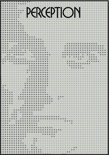
PERCEPTION
Advancing Knowledge in Multidisciplinary Perception StudiesPERCEPTION is a leading journal published by SAGE PUBLICATIONS LTD, focusing on the multidisciplinary aspects of perception across various fields, including Artificial Intelligence, Experimental and Cognitive Psychology, Ophthalmology, and Sensory Systems. With a commitment to advancing knowledge and fostering innovative research, the journal has been in circulation since 1972 and is recognized for its rigorous peer-review process and significant contributions to the academic community. Its current impact factor and Scopus rankings position it within the esteemed Q2 and Q3 categories, making it a valuable resource for researchers and professionals aiming to explore the complexities of human perception and its computational models. Although PERCEPTION does not offer open access, it provides essential insights and findings that are particularly relevant for students and academics in psychology, neuroscience, and artificial intelligence. Addressing cutting-edge topics, this journal serves as a vital forum for the exchange of research ideas and methodologies in the evolving landscape of perception studies, making it a crucial asset for anyone dedicated to understanding this intricate field.

Jordanian Journal of Computers and Information Technology
Unveiling New Horizons in Information SystemsJordanian Journal of Computers and Information Technology, published by Princess Sumaya University and SRSF, stands as a significant platform for scholarly research in the realm of computer science, particularly in topics related to emerging technologies and information systems. With its Open Access model initiated in 2015, the journal facilitates global access to high-quality research findings, embodying the principles of knowledge sharing and academic collaboration. The journal's ranking in the Q3 category of Computer Science (miscellaneous) and its placement in the 54th percentile of Scopus' General Computer Science rankings underscore its growing reputation among researchers and professionals alike. Situated in Amman, Jordan, the journal actively contributes to the regional and international discourse on computing methodologies, applications, and innovations, making it an indispensable resource for scholars seeking to advance their understanding and engage with contemporary issues in technology.
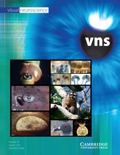
VISUAL NEUROSCIENCE
Charting New Territories in Visual ResearchVISUAL NEUROSCIENCE is a distinguished journal dedicated to advancing the understanding of visual processing through neuroscientific research. Published by Cambridge University Press and indexed in Scopus, this journal emphasizes the latest experimental and theoretical insights into the neurological basis of vision. Since its inception in 1988, VISUAL NEUROSCIENCE has effectively contributed to the field, showcasing high-quality research and innovative findings. Although it currently sits in the Q3 and Q4 quartiles for Physiology and Sensory Systems respectively, its commitment to rigorous research has allowed it to maintain relevance in a diverse array of scientific disciplines. Researchers, professionals, and students alike will find value in its comprehensive articles that explore the complexities of visual perception and associated neural mechanisms. The journal does not offer open access options, enhancing the exclusivity of its researched content. Set against the backdrop of Cambridge, England, VISUAL NEUROSCIENCE stands as an essential platform for the dissemination of knowledge in the vibrant field of visual neuroscience.
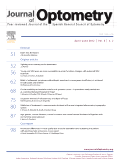
Journal of Optometry
Transforming eye care with cutting-edge research.The Journal of Optometry, published by Elsevier, is a leading open access journal dedicated to advancing the field of optometry and vision science. With an ISSN of 1888-4296 and an E-ISSN of 1989-1342, this journal serves as a pivotal platform for researchers, practitioners, and academics alike to disseminate and engage with high-quality original research and review articles. As of 2023, the journal holds an impressive Q2 ranking in the Optometry category, demonstrating its influence and relevance, particularly as it ranks #2 out of 12 in the Health Professions - Optometry category on Scopus with an 87th percentile. Since becoming open access in 2008, the Journal of Optometry has prioritized accessibility and the exchange of ideas, enriching the scholarly community and enhancing practical application in clinical settings. The journal welcomes submissions that push the boundaries of ocular research, clinical practices, and the education of optometry professionals, making it an essential resource for anyone invested in the future of eye health.

Eye and Vision
Connecting global minds in the pursuit of vision advancements.Eye and Vision, published by BMC, is a leading open-access journal dedicated to the dynamic field of ophthalmology and visual sciences. With its ISSN 2326-0246 and E-ISSN 2326-0254, the journal has established itself as a premier platform for innovative research and clinical studies, achieving impressive rankings in 2023 as Q1 in both Health Professions (Miscellaneous) and Ophthalmology categories. The journal's commitment to accessible knowledge since its transition to open access in 2015 enhances its global reach, allowing researchers, clinicians, and students to share and access top-tier studies and advancements in the field. Located in the United Kingdom and delivering influential insights from 2014 through to 2024, Eye and Vision holds significant relevance, with a Scopus ranking placing it in the 99th percentile for Health Professions and the 93rd percentile for Ophthalmology, making it an essential resource for those looking to stay at the forefront of eye research and vision science.